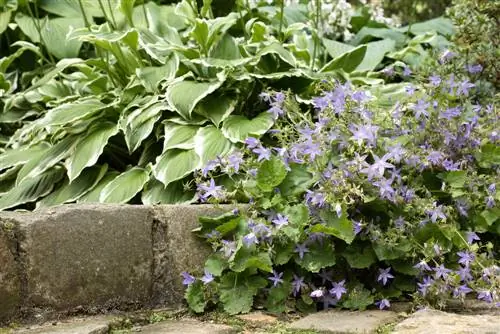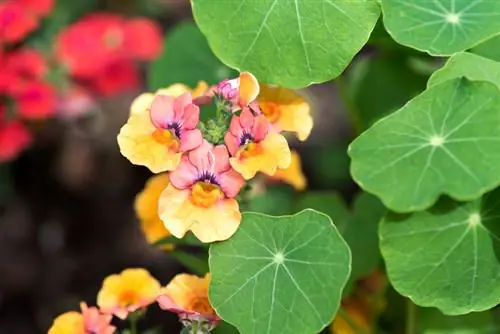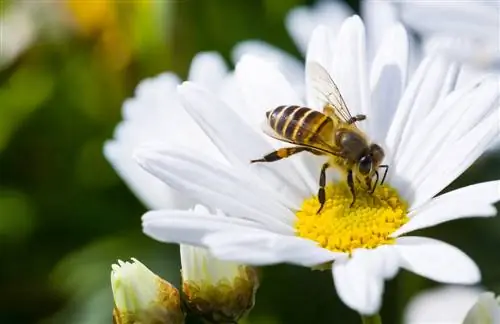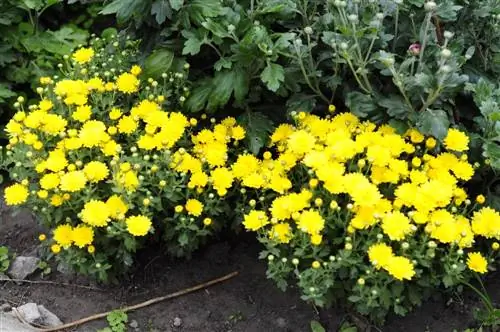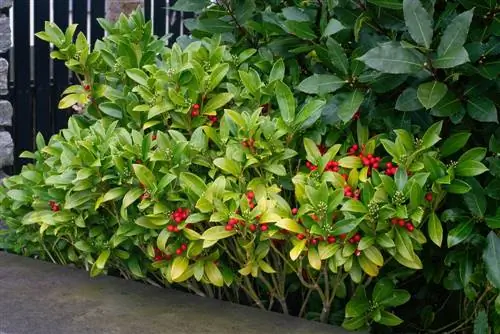- Author admin [email protected].
- Public 2023-12-16 16:46.
- Last modified 2025-01-23 11:22.
It exuberantly presents us with its delicate flower bells all summer long. Not only its appearance, but also its adaptability and undemanding nature make the bellflower a popular perennial in gardens and on balconies. But how do you best combine them?
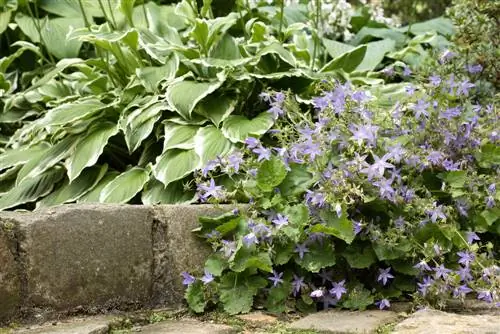
Which plants go well with the bellflower?
The bellflower combines well with spurge, hosta, roses, columbine, yarrow, verbena, foxglove and delphinium. Pay attention to similar location requirements, flowering times and harmonious colors for a successful plant combination.
What factors should you consider when combining the bellflower?
For combinations that tantalize the senses, consider the following factors when choosing companion plants:
- Flower color: violet, blue or white
- Flowering time: June to September
- Location requirements: sunny to partially shaded, humus-rich and permeable substrate
- Growth height: up to 50 cm
When combining, pay attention to the height of the respective bellflower. There are smaller species measuring around 20 cm and larger species that grow up to 50 cm high.
Since bluebells thrive best in sunny to partially shaded locations, they should be planted with planting partners who have similar requirements.
It is also advisable to combine bluebells with plants that are in bloom at the same time and harmonize with the colors of the selected bluebells.
Combine bellflowers in the bed or in the pot
The romantic flower shape and the rather cool colors blend nicely into perennial beds with, for example, ornamental foliage perennials, lady's mantle and delphiniums. Rose beds can also be enriched with bluebells. There, however, the bluebells take on more of a supporting role. Furthermore, bluebells look fantastic when combined with slender, upright growing and significantly taller perennials. They span this in the lower area and provide beautiful contrasts.
The following companions go best with the bluebells:
- Spurweed
- Funkie
- Roses
- Aquilegia
- Yarrow
- Vervain
- Foxglove
- larkspur
Combine bluebells with yarrow
Plant yellow yarrow near purple or blue bluebells. During the flowering period, which begins in June for both plants and ends in September, the resulting complementary contrast will certainly delight you. This combination is also exciting because the appearance of these plants differs greatly from one another.
Combine bellflower with monkshood
The bluebell and monkshood are in a color balance and their flower shape is also similar. This makes the overall picture appear calm. But their size differs: the bluebells are clearly towered over by the monkshood. They have similar wishes regarding their location. Because of these many similarities, the two are an excellent match.
Combine bellflower with hosta
There is something magical and almost mystical about the combination of bluebells and hostas. The duo is wonderfully pleasing to the eye when a color from one plant is reflected in the other. For example, white bellflowers intoxicate next to white variegated hostas, while blue bellflowers form a symphony with blue-leaved hostas.
Combine bellflowers as a bouquet in the vase
A bouquet of bluebells promises romance and desire. For example, arrangements of white and purple bellflowers together with other similarly colored flowers have a heart-touching effect. Pastel tones also pamper the viewer. However, it becomes more childish and cheerful if you contrast violet to blue bellflowers with yellow daylilies. A little gypsophila in between ensures naturalness and loosening up.
- Cornflowers
- Lupins
- Gypsophila
- Daylilies
- Roses
- woman's coat

